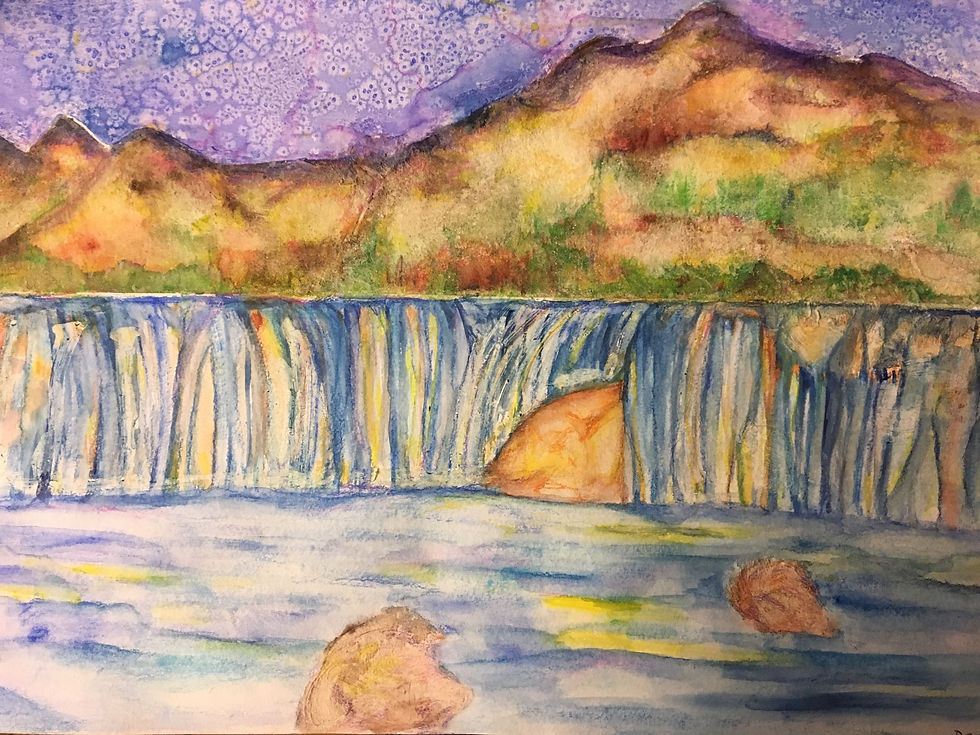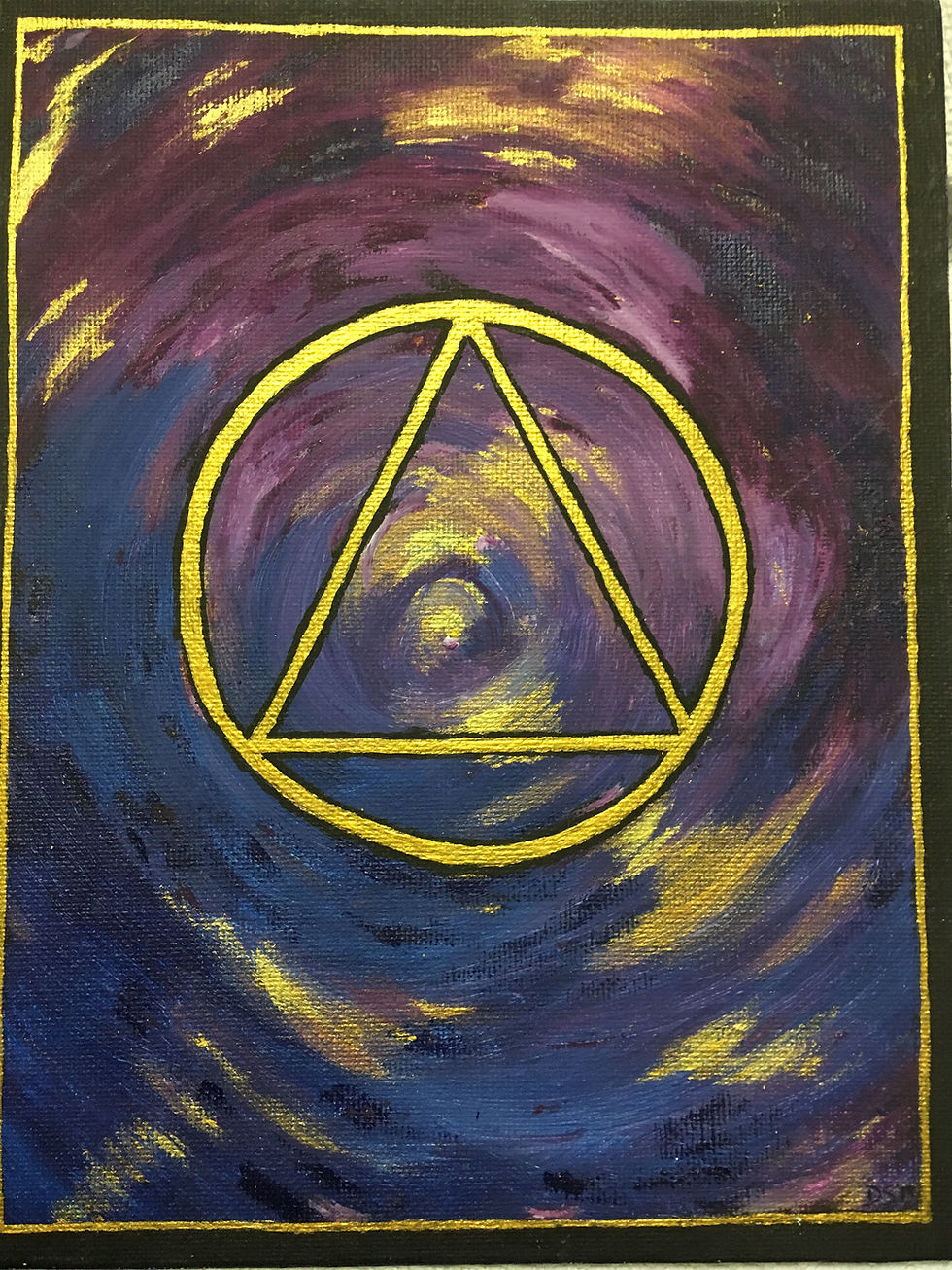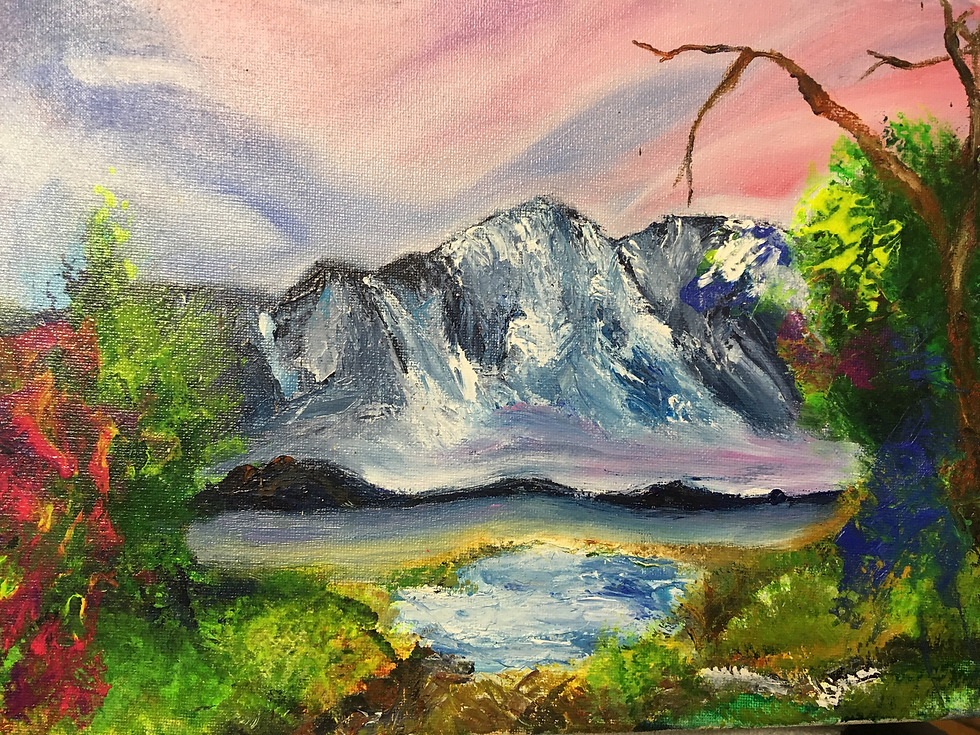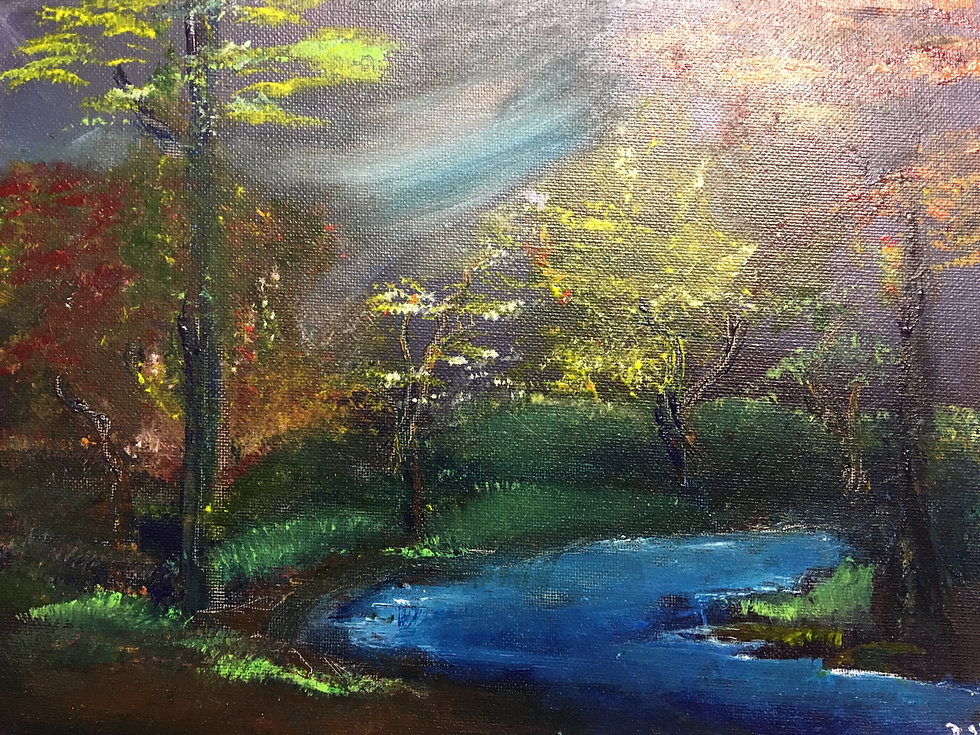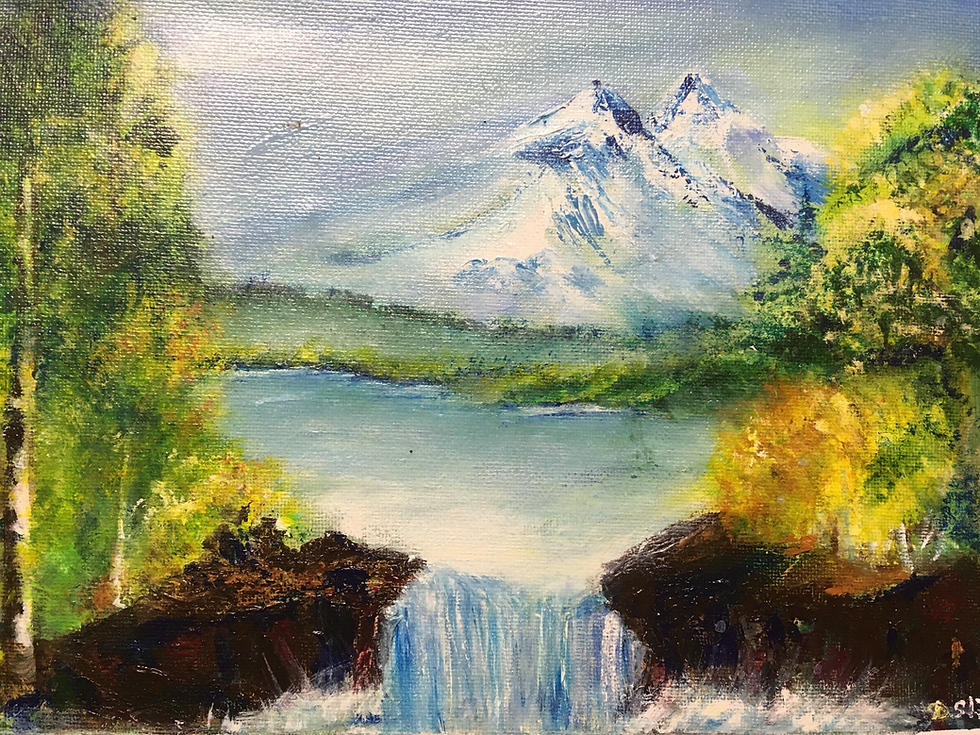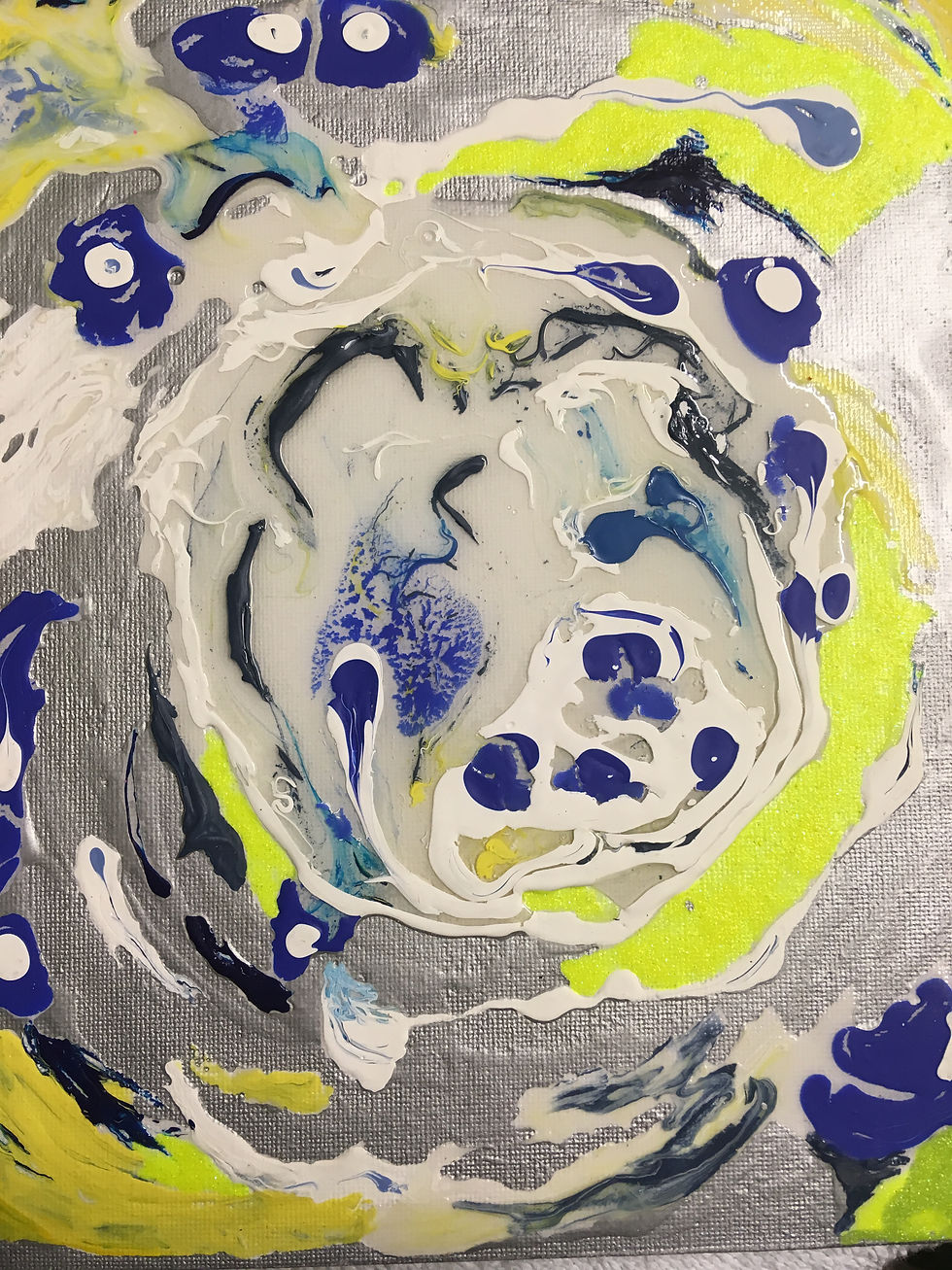
DANA'S YOGA ART FOR WARRIORS
" THE SYSTEM OF CARE FOR PSYCHOLOGICAL HEALTH THAT HAS EVOLVED OVER DECADES IS INSUFFICIENT TO MEET THE NEEDS OF TODAY'S FORCES AND THEIR BENEFICIARIES , AND WILL NOT BE SUFFICIENT TO MEET THEIR NEEDS IN FUTURE." ( Dept, of Defense Mental Health Task Force 2007-2008)
May the Presence of my art of My Higher Self brings healing, peace and joy to all your hearts Namaste
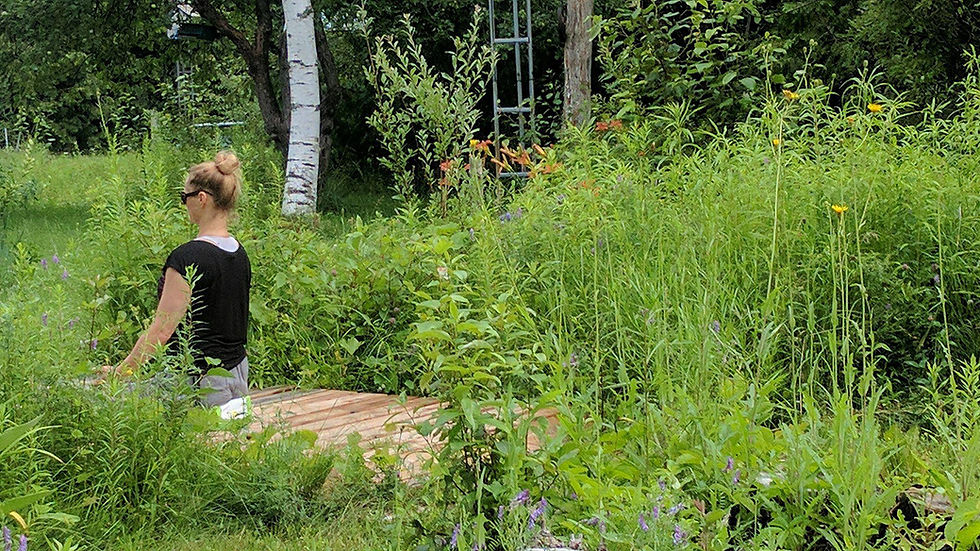
“Many will notice the change in your attitude,
and make judgements, call you names – arrogant,
Ill tempered. But only a select few will see beyond
and notice the hurt, pain, rejection that triggered
the anger, and activated your defence
in the form of changed attitude.
And of these few who notice, barely exceptional ones, will care enough to act and see their contribution to your pain – apologise or take corrective actions, to help your heart heal.
To find someone who understands your emotions so well and does not define you by your outbursts or your temper, but instead sees the factors that trigger those reactions in you, even when they are at the receiving end, is nothing less than a miracle.”
― Drishti Bablani, Wordions
I AM THAT I AM
DANA'S YOGA FOR WARRIORS
The classes are focused on all levels of individuals curious to experience and practice to art of Yoga and have been developed from a foundation intended to help Military issues with Posttraumatic Stress Disorder and brain injuries. and have been expanded for all people and walks of life.
The benefits:
Promoting and increasing greater health,
Increasing mental awareness
Creating balance, relaxation
Practicing various types of breathing techniques
Balancing the body and mind
Improving flexibility, strength, endurance, focus, memory, decreasing and controlling stress and more…
The main goal: is to strive for a healing that can occur within and all around; allowing YOU to gain parts of yourself that have been lost and through the art of yoga re- build yourself back into a healthy and happy individual.
Guarantee: safe, nonjudgmental, noncompetitive environment
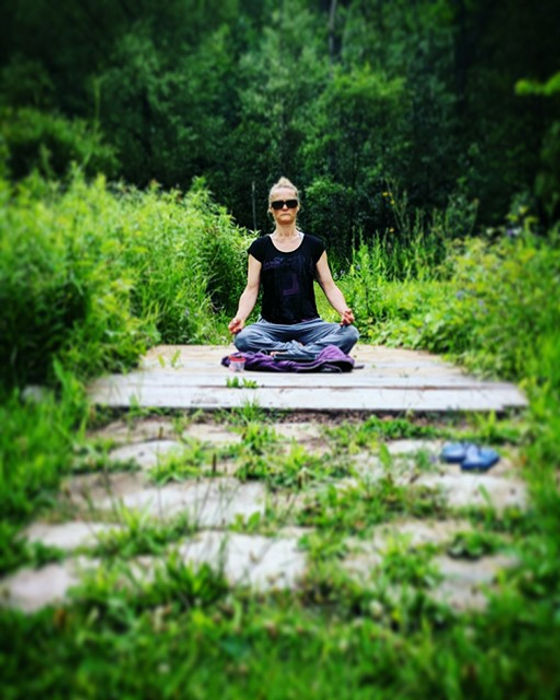
DANA'S YOGA FOR WARRIORS
BREATHING
FEELING
LISTENING TO THE BODY
LETTING GO OFF COMPETITION, JUDGEMENT AND EXPECTATIONS
STAYING IN THE PRESENT MOMENT
HATHA YOGA POSES
Establishing Base and Dynamic Tension
Core stability
Aligning the Spine
Softening and Aligning Knees
Relaxing Shoulders Back and Down
Hinging at the Hip
Shortening the Lever
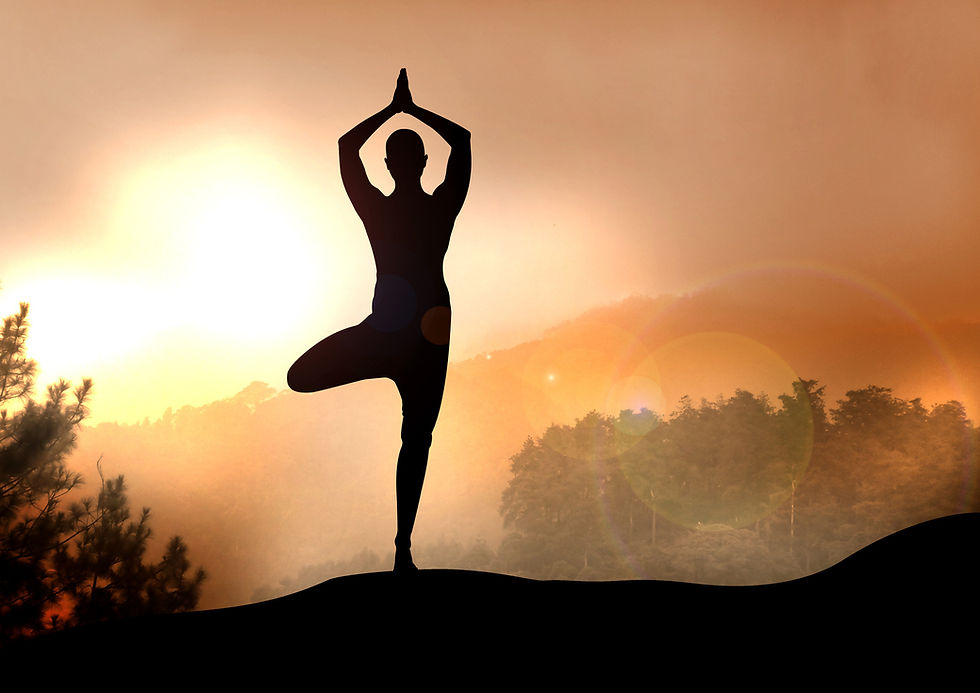
POST TRAUMATIC STRESS DISORDER
People experience a range of reactions following trauma. Most of us recover fine, given a little time . Approximately 2-3% of the general population suffers from PTSD at ANY GIVEN TIME , this number jumps to 12-15% in the military.
PTSD can occur:
COMBAT EXPOSURE
CHILD SEXUAL, PSYCHOLOGICAL OR PHYSICAL ASSAULT
TERRORIST ATTACK
SEXUAL AND PHYSICAL ASSAULT
SERIOUS ACCIDENTS (CAR CRASHES )
NATURAL DISASTERS (FIRE, TORNADO, HURRICANE , FLOOD, EARTHQUAKE)
POST TRAUMATIC STRESS DISORDER
TRAUMA IS COMMON.
About 60% of US adults experience at least one trauma in their life.
And almost 1 in 10 CANADIANS has PTSD at some point.
Canadians are most accustomed to hearing about post-traumatic stress disorder among returning soldiers, but a newly published study suggests that almost one in 10 civilians meets the criteria for PTSD at some point in his or her lifetime.
Researchers at McMaster University in Hamilton have released the findings of a national survey that appear in the latest issue of the quarterly journal CNS Neuroscience and Therapeutics.
They conducted a telephone survey of 2,991 people, age 18 and over, from across Canada in July and August 2002, and found the prevalence rate of lifetime PTSD was estimated at 9.2 per cent.
Based on the responses, they estimate that at any given time, 2.4 per cent of the population is experiencing the disorder.
Altogether, 76.1 per cent of respondents reported exposure to at least one event sufficient to cause PTSD, such as the unexpected death of a loved one, sexual assault or seeing someone badly injured or killed.
"Most people who experience a trauma may experience symptoms, but they usually resolve on their own," said researcher Michael Van Ameringen, co-director of McMaster's Anxiety Disorders Clinic and associate professor in the department of psychiatry and behavioural neurosciences.
"But for nine per cent of people, the symptoms that you get after experiencing a trauma might continue on."
He decided to conduct the study because there was a dearth of statistics on the prevalence of PTSD in the civilian population in Canada.
Health-care providers need to take notice, he said.
Concern arises weeks after trauma
"I think mental-health professionals and primary-care people need to be aware that traumatic events are common and that people do develop PTSD, and I think clinicians don't usually look for this kind of disorder when they're seeing people," he said Wednesday in an interview from Hamilton.
"Particularly with sexual assault it's often not very easy for people who have been assaulted to go and ask for help."
After a traumatic event, a person typically feels numb and can be keyed up, anxious, not sleep and depressed.
"People re-experience the trauma, so they can be replaying it in their head, they can have a re-experiencing event such as flashbacks, they can have nightmares of the event and they avoid things that remind them of the trauma," Van Ameringen said.
If a person still isn't sleeping, eating or going to work or school a couple of weeks after a trauma, then there should be concern that the individual might be developing post-traumatic stress disorder, he said.
Katy Kamkar, a clinical psychologist at the Centre for Addiction and Mental Health, said it was a "great study" in that it tried to look at the prevalence of PTSD in Canada, and that if the findings can be repeated in another study, "we can reach stronger conclusions."
"It's a significant disorder, it's a serious disorder, and when a person has PTSD, the person does need help, absolutely, because it does have a big impact on various areas of your functioning," said Kamkar, who works in the centre's work stress and health program.
It often goes hand in hand with other disorders such as depression and substance abuse, she noted.
Risk of developing PTSD can involve a number of factors, including:
Severity of the trauma.
Proximity to the trauma.
Previous traumatic events the person might have suffered.
Social supports.
Whether the individual had a traumatic childhood.
"We do recommend early treatment to prevent exacerbation of the symptoms. And often it's a combination of medication and psychological treatment," Kamkar said.
The psychological treatment would involve education about anxiety and components of PTSD, as well as exposure exercises that involve talking about the trauma.
Almost 1 in 10 Canadians has post-traumatic stress at some point: study | CBC News
SYMPTOMS OF PTSD
FOUR TYPES OF SYMPTOMS OF PTSD:
1. Reliving the event (re-experiencing symptoms )
-bad memories , nightmares, flashbacks (feeling like you are going through the event again )
2. Avoiding situations that remind them of the event . They will try to avoid situations or people that trigger memories of the traumatic event which will lead to avoid talking or thinking about the event .
3. Feeling numb ( dissociation) , hard to express your feelings, no longer interested in activities that you were previously - another way how to avoid memories
4. Feeling keyed up (hyperarousal)
-may be jittery , or always alert and on the lookout for danger
OTHER SIGNS AND SYMPTOMS OF PTSD :
-feeling of hopelessness, shame , or despair
-depression
-anxiety
-drinking
-drugs problems
-physical symptoms
-chronic pain
-employment problems
-relationship problems , including divorce
Traditional Treatments for PTSD:
Psychotherapy - Cognitive behavioral therapy ( CBT) -
1. Cognitive Processing Therapy (CPT) - learning skills to understand how trauma changed your thoughts and feelings.
2. Prolonged Exposure (PE) therapy- talking about your trauma repeatedly until memories are no longer upsetting.
Emotional Freedom Technique ( EFT) - a form of psychological acupressure, based on the same energy meridians used in traditional acupuncture to treat physical and emotional ailments for over five thousands years
, but without needles , simple tapping with the fingertips is used to input kinetic energy onto specific meridians on the head and chest while you think about your specific problem, whether it is traumatic event, an addiction,pain, etc., and voices positive affirmations.

DANA'S YOGA FOR WARRIORS
TRAUMATIC BRAIN INJURIES (TBI)
PRIMARY BLAST INJURY=organ and tissue damage caused solely by the blast wave associated with high-order explosives.
SECONDARY BLAST INJURY=Low-order (LE) explosions are typically deflagrations whose exothermic wave is subsonic and isn’t nearly as powerful.( flying debris, bomb fragments and projectiles causing blunt and penetrating trauma )
TERTIARY BLAST INJURY=results from the human body actually being thrown by the blast wind and may manifest as fractures, traumatic amputations and brain injuries.
QUATERNARY BLAST INJURY =burns, angina, crush injuries, asthma or COPD exacerbations due to dust, smoke or toxic fumes.
CAUSES =BLASTS, BULLETS,FRAGMENTS , FALLS, MOTOR VEHICLE CRASHES AND ROLLOVERS, SPORTS ASAULTS, INM DEPLOYMENT BLASTS ARE THE LEADING CAUSES OF TBI.

NEWARTFROMHEART
PAINTING CLASSES - COMING SOON
POST TRAUMATIC STRESS AND ART
ART PLAY for Combat-Related PTSD: Recommendations for Research and PracticeWith a new generation of American combat veterans returning from Iraq, the nation has an obligation to do everything possible to improve care for posttraumatic stress disorder (PTSD). Although art therapy has been understudied in this context, it shows promise as a means of treating hard-to-treat symptoms of combat-related PTSD, such as avoidance and emotional numbing, while also addressing the underlying psychological situation that gives rise to these symptoms.
(http://www.tandfonline.com/doi/abs/10.1080/07421656.2006.10129335)
ART PLAY FOR CHILDREN
The Effectiveness of Art Interventions in Reducing Post Traumatic Stress Disorder (PTSD) Symptoms in Pediatric Trauma Patients
(http://www.tandfonline.com/doi/abs/10.1080/07421656.2001.10129750)
ART PLAY for ADOLESCENTS with Posttraumatic Stress Disorder Symp
Abstract
This study examined the efficacy of an adjunctive traumafocused art therapy intervention in reducing chronic child posttraumatic stress disorder (PTSD) symptoms in an inpatient psychiatric facility for youth. We compared 2 treatment conditions, each delivered in one 1-hour group sessions over 16 weeks: (a) a trauma-focused expressive art therapy protocol (TF-ART) and (b) a treatment-as-usual (TAU) control condition, the standard arts-and-craft-making activity used at the two participating facilities. Youths were randomized to either treatment condition, and assessed before and after treatment. The principal outcome measure was the severity of PTSD symptoms measured using the UCLA PTSD Reaction Index, administered as an interview. There was a significant treatment-by-condition interaction indicating that adolescents in the TF-ART condition had greater reduction in PTSD symptom severity than youths in the TAU condition. TF-ART was not found to be associated with more behavioral problems during the treatment period. Results indicate that TF-ART may be a promising adjunctive treatment for inpatient adolescents with PTSD symptoms.
toms: A Pilot Study
(http://www.tandfonline.com/doi/abs/10.1080/07421656.2007.10129474)
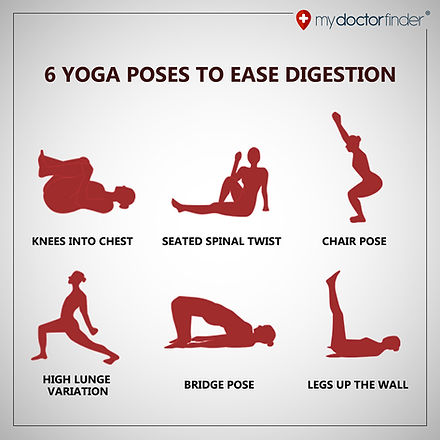
OPENING HOURS
PLEASE CONFIRM ALL APPOINTMENTS
DANA
TO LIVE IN THE ART OF YOGA ONE SHOULD LIVE IN MOMENT OF BREATH NOW WHEN EACH BREATHE IS HONORED WITH DEEP GRATITUDE PERCEPTION TO OUR HIGHER SELF. (DANA)
647 880 6658













